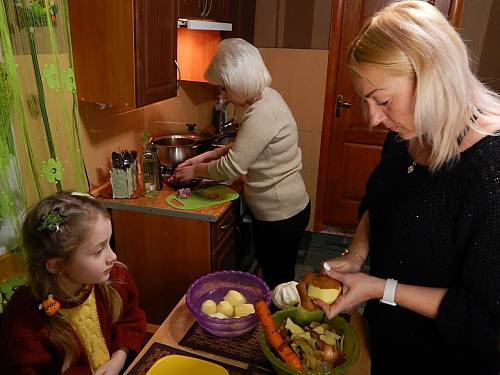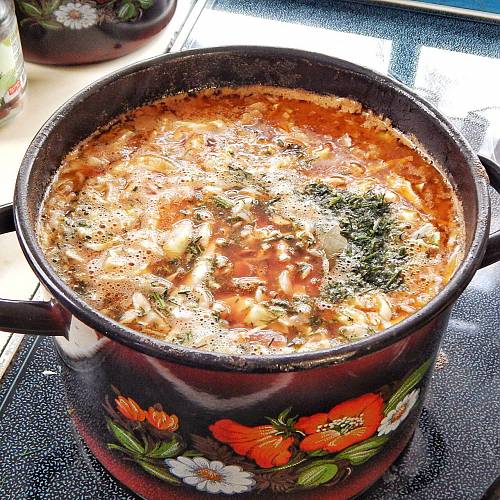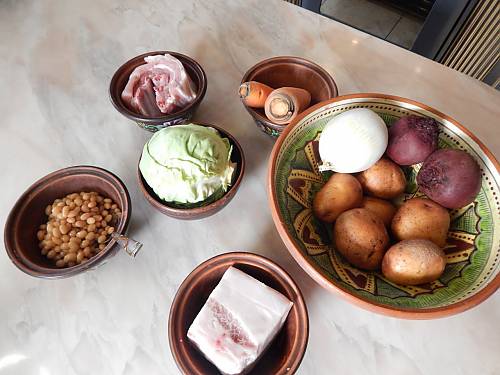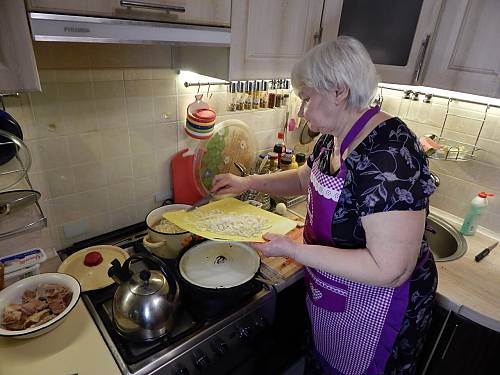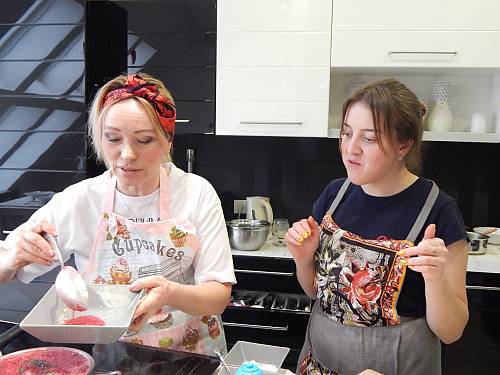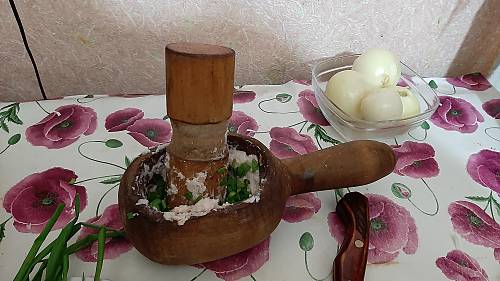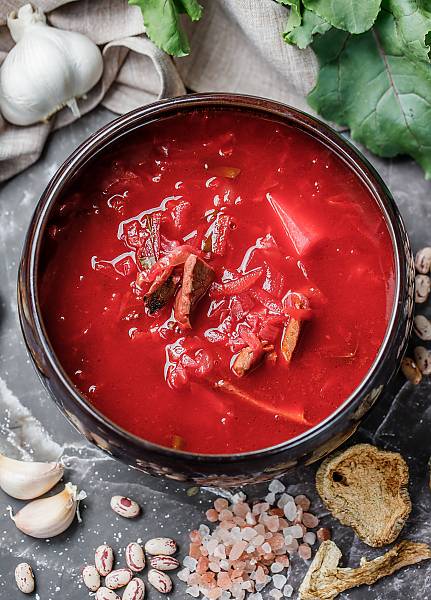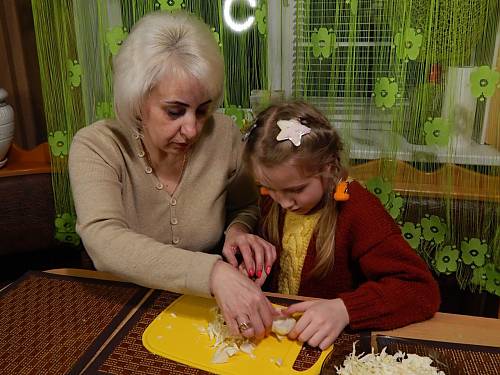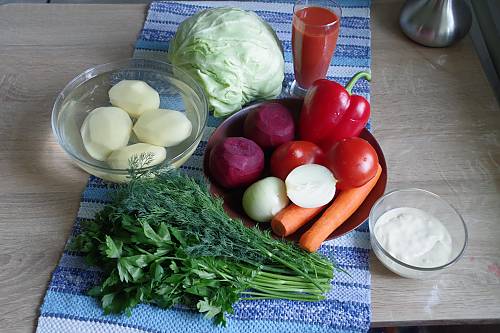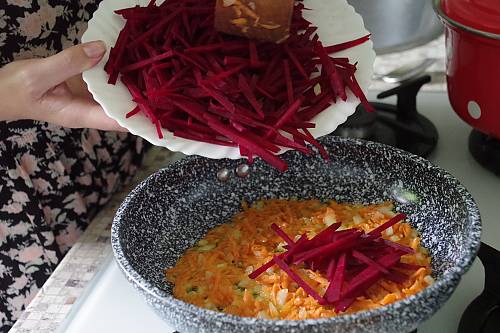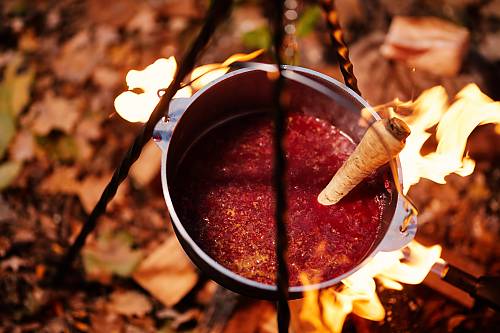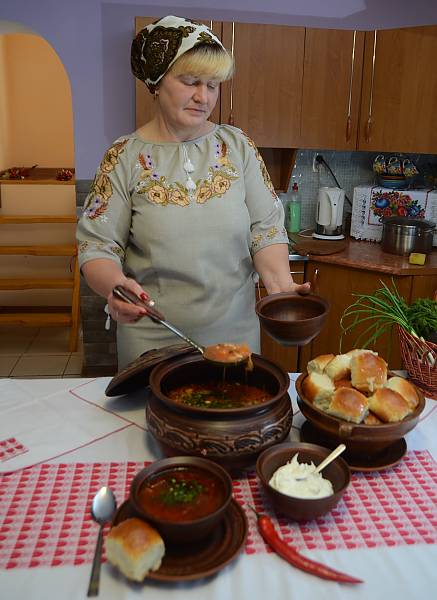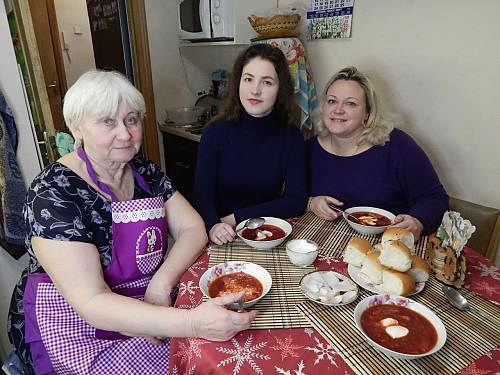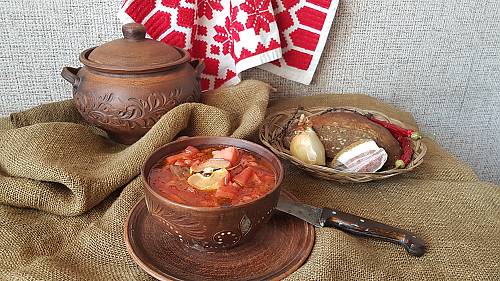Culture of Ukrainian borscht cooking
Inscribed in 2022 (5.EXT.COM) on the List of Intangible Cultural Heritage in Need of Urgent Safeguarding

Case of extreme urgency
Ukrainian borscht is a traditional dish that is cooked with broth combined with beetroot, sugar beet or fermented beet juice. There are many versions, and the practice entails the recipe, cooking method and occasion, according to which a certain variety is prepared. Borscht is cooked in a large pan or pot and typically served with bread or garlic buns. It is prepared primarily by women, although many men also prepare it as an everyday dish. The practice dates back centuries and is passed on within families, with children participating in the preparation. An expression of hospitality, Ukrainian borscht unites people of all ages, genders and backgrounds at the table. It is also used in ritual practices, such as in the region of Podillia, where the third day of the wedding has maintained its ritual name do nevistky – na borshch, meaning ‘visit daughter-in-law to eat borscht’. It is lauded in tales, folk songs and proverbs and viewed as a lifestyle and identity marker. The viability of the element, however, is threatened by various factors since the beginning of the armed conflict in February 2022, including the displacement of bearers from their communities of origin and from the cultural contexts necessary for the cooking and consumption of borscht in Ukraine. Moreover, destruction to the surrounding environment and traditional agriculture has prevented communities from accessing local products, such as vegetables, needed to prepare the dish. Despite these difficulties, communities across Ukraine have united around the element.
